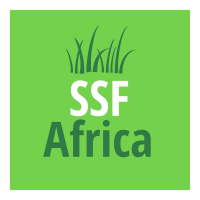North Western Province is very versatile to the economic development of Zambia and other Southern region of Africa in terms of hosting two major rivers that require attention. Zambezi and Kafue Rivers are currently the major source of green efficiency energy generating that is powering many economic avenues ranging from mining and agriculture. The current economic development taking place in North Western province in areas of mining and agriculture is worrying.
Zambia has approximately 44.2 million hectares of dryland forest, representing approximately 59% of its total land area. There are four types of dryland open forests/woodlands in the country, Miombo, Kalahari, Mopane and Munga woodlands. The most extensive dryland forest type, Miombo woodland, is characterized by Brachystegia, Julbernadia and Isoberlinia. Miombo woodlands are of considerable economic importance in Zambia for the supply of redwood, charcoal, timber and Non Timber Forest Products (NTFPs). Kalahari (or Baikiaea–Terminalia) woodland is found on Kalahari sands of the upper Zambezi basin in Zambia’s Western and North-Western provinces. It is the main source of commercial timber for Zambia. Mopane woodlands – dominated by Colophospermum mopane- are distributed in a band stretching from southern to eastern Zambia. Mopane woodland is important economically for timber and edible caterpillars, as well as charcoal and fuel wood. Munga (or Acacia–Combretum woodlands) are found over a large part of central and southern Zambia. A significant area of dry evergreen forests are also found in the North-Western and Western provinces of Zambia. With 9,053,223 ha of forests – representing more than 19% of Zambia’s total forest cover – the North West Province (NWP) has the largest area of land under forest coverage in Zambia. The province has the most intact forest cover in the country, and the highest concentration of carbon storage. More than 25% of the forests in the North Western Province are conserved in forest protected areas. These forest protected areas include: two national parks – the north-western parts of Zambia’s biggest National Park, Kafue National Park (KNP) and West Lunga National Park (WLNP); seven Game Management Areas (GMAs); 32 National Forests (NFs); and 18 Local Forests (LF [1] (please refer to the map of the forest protected areas in Annex A and a brief prole of the NWP in Annex D). The North Western Province lies in the watershed between DR Congo and Zambezi river systems. It is also the major source of the Kafue river basin. The western extremity of the province includes the Zambezi River, and its wide Barotse Floodplain, representing a vast sh and aquatic wildlife habitat. The NWP contains biodiversity of global (typied by high levels of endemics with Guineo-Congolian origins) and regional (typied by the biodiversity of the forest-savanna mosaic) importance. The province is home to six Important Bird Areas (IBAs): Hillwood; Source of the Zambezi; Chitunta Plain; West Lunga National Park and
Lukwakwa; part of Kafue National Park; and Jimbe Drainage. The province is rich in wildlife species diversity, with notable wildlife species including the African elephant, African buffalo, sitatunga, puku, roan and sable antelopes, lion, cheetah, leopard, African wild dog, hyena and jackal. This project will focus on improving the conservation and sustainable use of the dryland forests in the Game Management Area (Game Management Areas)[2] and Local Forests (LFs)[3] of the NWP.
Rural communities living in and adjacent to the GMAs and LFs in the NWP depend heavily on the dry land forests for their day-to-day subsistence, income generation and ecosystem services. The main source of rural household income of these rural communities is mainly natural resource-based livelihoods. About 75% of these rural households earn income from the sale of agricultural crops, while more than 50% earn income from the sale of forest-based products. Rain-fed small-scale subsistence agriculture in maize, beans, soya beans, groundnuts, pineapples and cassava production are the main livelihood activities; along with livestock (cattle, goats, pigs and sheep) and poultry farming. There is also a high degree of dependency of these rural households on forest resources for home consumption and income; including redwood, poles, charcoal, honey, mushrooms, roots, grass, wild fruits and caterpillar.
Observing the above description of the region, the Province is lacking institution arrangement of proper management of sustaining the forest. The entire landscape of the province is being managed by the Government through Forestry Department which is even characterized with under staffing. In the past, the Government passed a law under Forest Act 2015 where Communities can chose a forest of their choice with economic and conservation value.
Vincent Green Environmental Foundation with 1 Africa wants to embark on landscape management through sustainable development goals. Co-benefits of the Project contribute is going to contribute to the United Nation’s Sustainable Development Goals (SDGs).
These benefits to the community include environmental, social, economic and heritage outcomes. The following United Nations SDGs will be satisfied by the project.
SDG 3: Good Health and Well-Being
Contribution to the positive mental health and well-being of indigenous communities.
SDG 4: Quality Education
Provision of job-specific training sessions and inductions for local employees.
SDG 6: Clean Water and Sanitation
Providing water access to under privileged community by sinking bore holes.
SDG 8: Decent Work and Economic Growth
Creation of jobs, and financial literacy to indigenous through village banking.
SDG 13: Climate Action
At least thousands of tonnes of CO2-e will be sequestered during the project’s lifetime.
SDG 15: Life on Land
The biodiversity planting of native trees and shrubs contain over 30 species of conservation significance.
SDG 17: Partnerships for the Goals
Partnerships with local and national organisations will be the target for the project.

